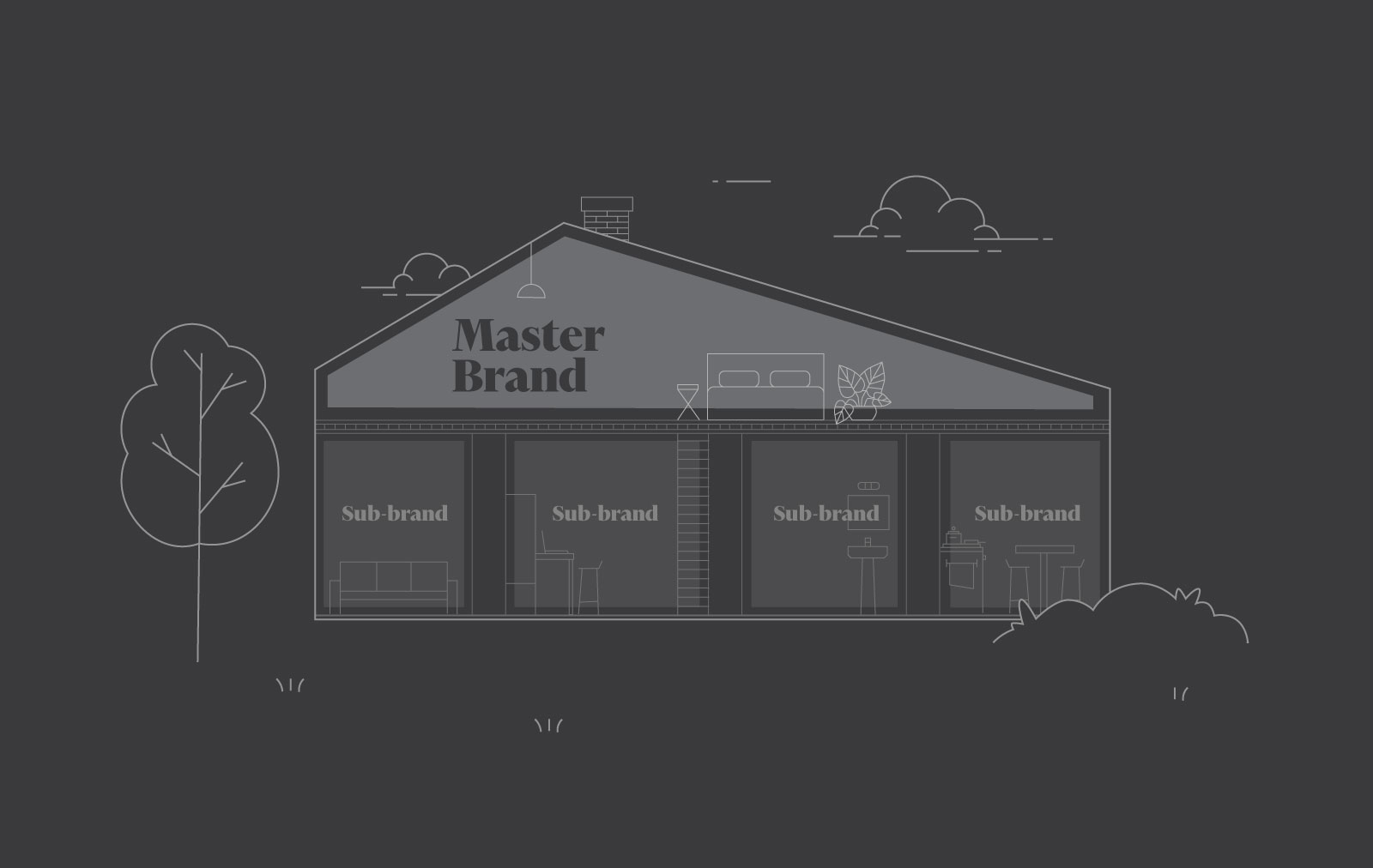March 7, 2019
Making Sense of Brand Architecture

Many people in business are likely familiar with, or at least heard of, terms like “sub-brands” or “product offerings”. While these terms can be somewhat self-explanatory, what do they mean for a larger, holistic brand strategy?
What is Brand Architecture?
Brand architecture is meant to help clarify and define your brand’s position and how you’re perceived by your audience. Having multiple brands or service offerings can cloud that perception and confuse your audience. Unless, that is, a logical system is formulated to present a deliberate hierarchy.
When companies offer a variety of services or products, it is important to consider how the brand will trickle down into each of its market sectors. This branding architecture most often takes one of three manifestations.

A House of Brands (aka Monolithic) is a company that markets a range of separate brand names, such as those found under Proctor & Gamble (Duracell, Tampax, Crest Toothpaste)
A Branded House is a company with one brand, and its products or services are subsets of this main brand, such as Virgin (Virgin Records, Virgin Atlantic, Virgin Media). The subsets within a house of brands have a stronger sense of independence from the parent brand, while those within a branded house have a stronger sense of a unified identity.
A Blended House (aka Endorsed) is a mix of the former two, with subset brands existing with subtler association with the parenting brand. Marriot’s hotel group is a great example of this with subbrands like Residence Inn, Courtyard and JW Marriot sharing branding elements with the parent company, but ultimately standing alone.
A branding agency will create a brand presence that is fitting and consistent with whichever type of brand architecture is appropriate for the company.
How to Choose the Right Brand Architecture
To determine which model is most suitable, it’s important to balance the intent of the business with the existing equity built with the current audience. It might seem like the oldest or original brand should be at the peak of a monolithic architecture every time. But maybe the public identifies with a particular sub-brand instead. In other cases, the initial feeling may be to adopt an endorsed model that permanently tethers the parent brand to the sub-brands. But findings may show that the sub-brands are too powerful on their own and would lose their distinction.
To gather this intel, various methods can be employed, from phone interviews to digital surveys to focus groups. These exercises can take days, or even weeks to execute properly and yield concrete findings. When results are compiled and laid out in black and white, it’s hard to argue that internal preferences should trump the feelings of the established target audience.
If you’re lucky, both are aligned and the path forward is clear and painless, though that is rarely the case. The larger a brand (or family of brands) is, and the bigger the cultural impact of that brand has, the harder it can be to tighten or shift its public representation.
The good news is that this is precisely why branding agencies exist – to help clients realize the best marketing approach to match with their corporate aspirations. If the business is centered around one product or one service, it’s certainly a much shorter exercise, however when it comes to multiple products, names or symbols, a proper brand architecture is the linchpin to longevity in the marketplace.

